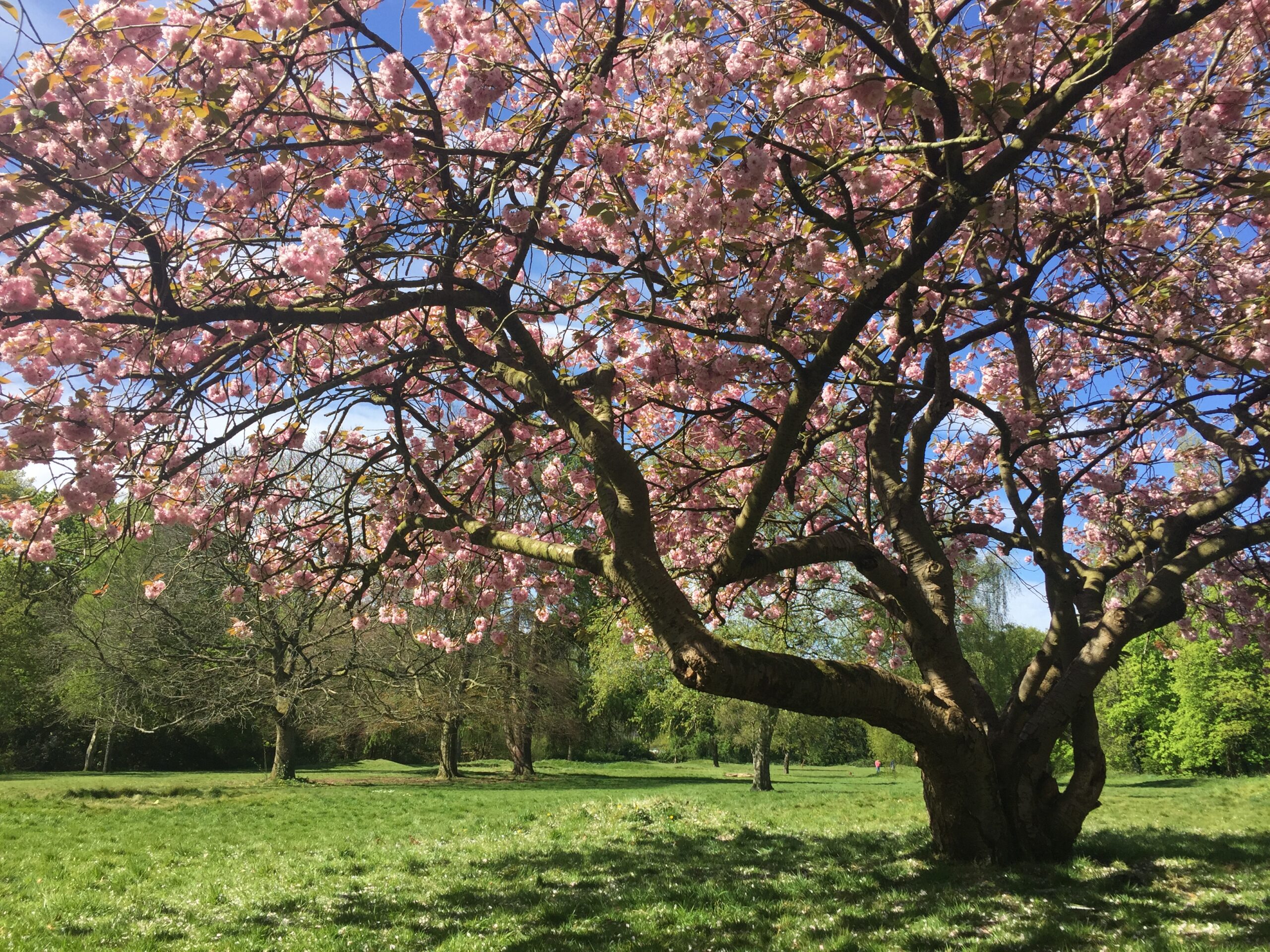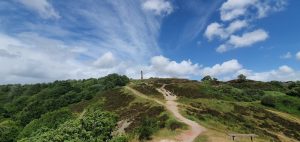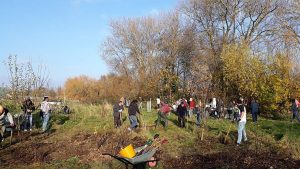Trees give shelter and shade, yield food and drink, produce food and compost. The soil at the bottom of a hedge makes magnificent compost.
Trees can be farmed annually – timber, fruits, mistletoe, holly, dried bay leaves, bundles of twigs, bags of logs and sawdust, staking poles, fencing, bedding, food for animals.
Types of wood
Holm Oak – Quercus Ilex – Mediterranean origin. Grows to about 25m. In old forests, grows close together suppressing undergrowth with leaves. Wood is very hard, heavy and stable but difficult to season. Good for firewood. Tales told of pinning wood to bed of stream to season it, leaving it there for 2 years.
Turkey Oak – Quercus cerris – Resembles real English oak, (Quercus robur) but taller although does not have the majestic shape. Wood resembles oak but paler and not as hard. It splits easily when green and makes good firewood.
Sweet Chestnut – Castanea sativa – Chestnut flour used to form peasant bread. Now very expensive in health food shops but nothing tremendous. If properly coppiced, provides straight poles. Not prized for firewood because it crackles and spits and doesn’t produce much heat.
Ash – Fraxinus excelsior – Has lower moisture than other trees (35%) and so burns well when freshly cut. Long spindly saplings can be useful as bean poles. Ash can be thinned by cutting two foot above ground. A new tree will grow to be cut again in a few years.
European Hornbeam – Carpinus betulus – Coppiced hornbeam grows straight poles from 5-10 cm diam. Easy to cut and stack and good size for stove without splitting. Not suitable for fencing posts.
Judas Tree – Cercis siliquastrum – Hard dense wood, suitable for turning and carving. Makes excellent firewood. Bright purple flowers in spring. Likes limestone conditions. Slow grower.
Black locust – Robinia pseudacacia – Leaf similar to acacias. Fast growing. Indifferent to sub-soil types. Frugal. Spreads by seeds and root suckers. Seedlings and young trees armed with vicious thorns until trunk or branch 8 cm diam. Forms impenetrable thicket if unchecked. Roots, like brown ropes, form dense network which stops anything else growing. Short flowering season; loved by bees and produces acacia honey. A hectare of Robinia said to produce 1000 kg of honey! Wood very hard, dense and fine grained. Used for fence poles or flooring blocks. Excellent firewood.
Trees for coastal areas
Trees suffer on the coast except for some carefully chosen species. If no care is taken in choice, the trees will become mis-shapen.
Late winter/early spring is better time to plant on coast because there is less time before weather warms up. Plant smaller specimens, 45cm (18″) ideal because they are in less danger of being uprooted and establish themselves better. Dig hole and add compost and firm soil round roots. Stake tree as necessary.
Conifers
Most of the species suitable are not native to British Isles. For high shelterbelt, up to 14m (40′), choose evergreens.
Monterey Cypress – Cupressus macrocarpus is good because it is salt tolerant. Has bright green foliage and pleasant lemon tang when crushed.
Monterey Pine – pinus radiata – also salt tolerant, has bright green needles in groups of three.
The Austrian Pine – pinus negra – does well but tends to shed its lower branches.
Bishop Pine – pinus muricata, Sitka Spruce – picea sitchensis and
Lodgepole Pine – pinus contorta are also wind and salt tolerant.
Evergreens
The Holm Oak – quercus ilex – is evergreen and will withstand salty gales.
Deciduous
White Poplar – populus alba – dark green, maple shaped leaves with white underside. Established since medieval times. Tree forms suckers which grow up between originals to form dense shelterbelt able to withstand cold and sea winds. Tolerant of poor soil. Thrives on marshy or waterlogged ground. Grows high and fast. Can grow to 50′ on stormy Cornish coasts
Sycamore – Acer psuedoplatanus – does well if closely planted.
Cornish Elm – ulmus stricta – is wind and salt tolerant and leaves turn to gold before falling in late November.
Ash – Fraxinus excelsior – does well close planted.
Willows – salix alba and salix caprea, Beech – Fagus sylvatica, Wych Elm – ulmus glabra and the Silver Birch – Betula pendula are all useful, with the latter being valuable on colder north and east coasts
Hedges
Useful as a buffer without causing turbulence of taller trees.
Escallonias – escallonia macrantha and escallonia rubra have beautiful pink or red flowers much loved by bees. Dense green foliage forms windbreak. Thrives best on west coast where prolonged frosts are rare.
Tamarisk – tamarisk gallica – despite its delicate looks it is wiry and resilient, surviving salt and sand. Easy to propagate by pushing cuttings into ground in February.
Sea Buckthorn – Hippophae rhamnoides – is a spiny shrub found wild on dunes in Cumbria and east coast. Wind and salt resistant providing thorny barrier to animals. Female plants bear berries which winter birds enjoy.
Olearias – olearia albida and olearia haasti – very tough evergreens. Will withstand coldest weather. Bears white flowers towards the end of summer.
Others are Spindle Tree (Eunonymus Japonica), Hawthorn (Cratageous monogyna) and Bamboo (Arundaria Japonica). A bamboo thicket can cause tropical conditions to leeward in summer.

Reproduced with permission of North West Parks Friends Forum







